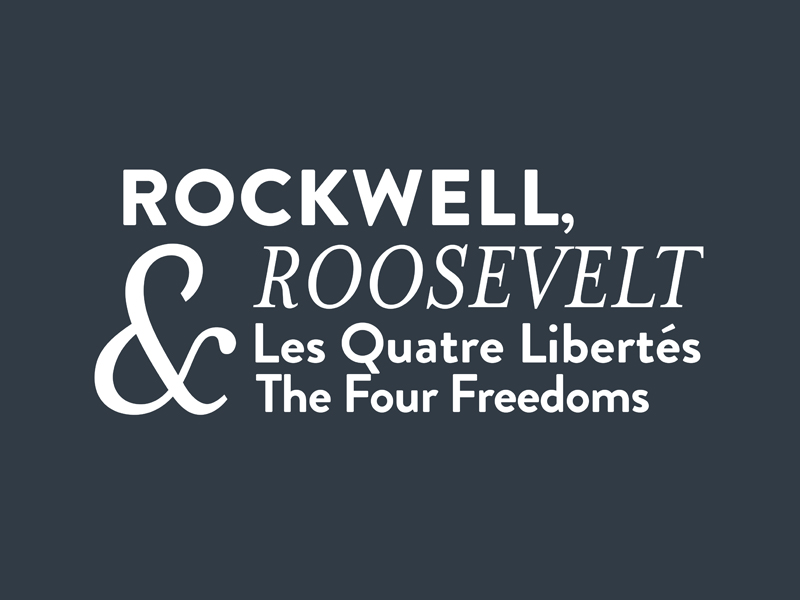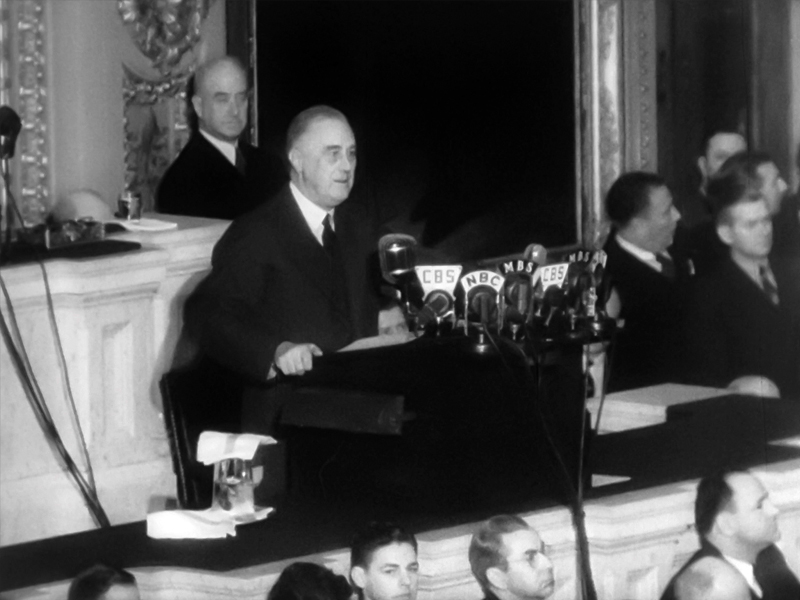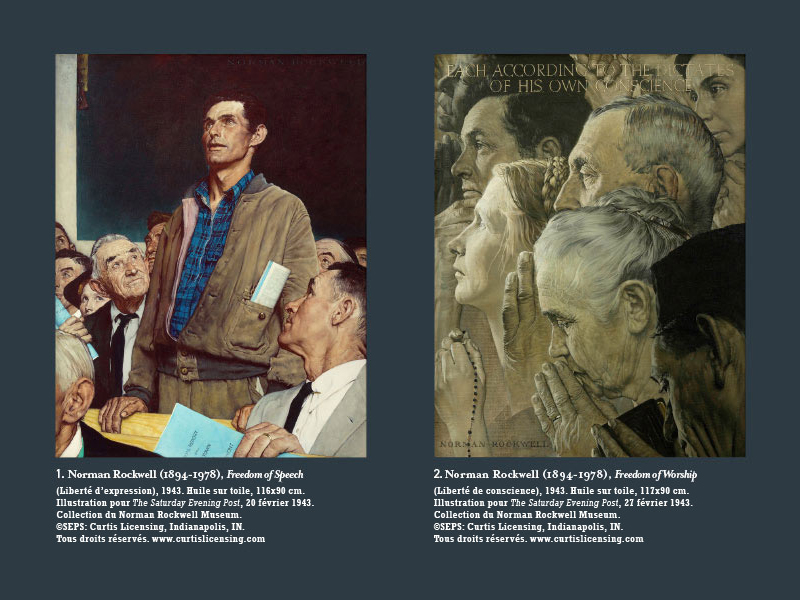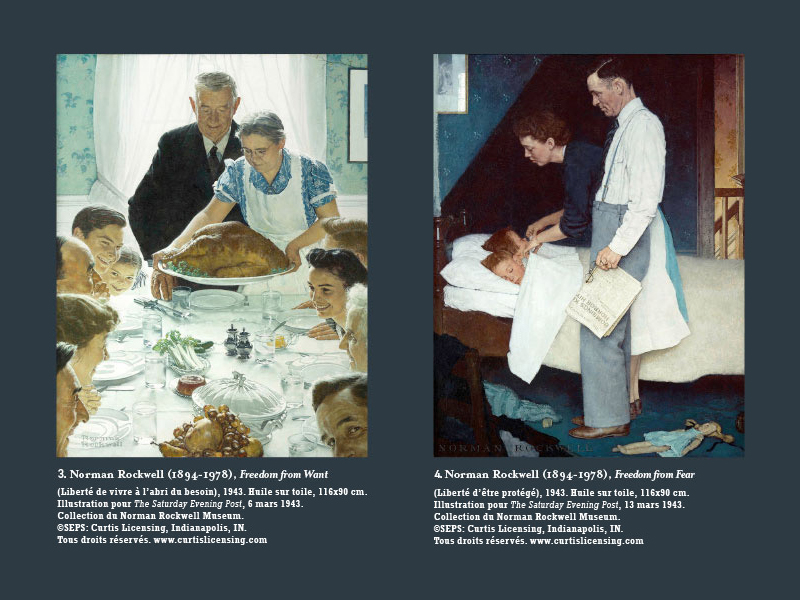
In partnership with the Norman Rockwell Museum, this exhibition will undergo a tour, whose only presentation outside of the United States will take place at the Caen Mémorial Museum in Normandy, France.

On January 6, 1941, American President Franklin D. Roosevelt gave one of the most important speeches of the 20th century. It was the “Four Freedoms” speech.
The U.S. was not yet at war, although Europe and Asia were. Inspired by this speech, Norman Rockwell produced four paintings to illustrate the “Four Freedoms”. During the war, these paintings travelled the United States, raising 130 million dollars to support the war effort.
These four paintings, which are among the most famous and important artworks of 20th-century America, will leave the U.S. for the first time ever. Along with other paintings, they will be shown at the Caen Memorial for the 75th anniversary of the Allied Landings and the Battle of Normandy. The D-Day Landings on June 6, 1944, heralded the liberation of Western Europe. The Battle of Normandy led to the collapse of the German army on the Western front and the liberation of Paris.
Discover the President Franklin D. Roosevelt’s January 6, 1941 speech on video => HERE
Speaking of the Four Freedoms, Rockwell said: “It was a job that should have been tackled by Michelangelo”. The painter devoted 7 months to producing these paintings.
These four paintings have their own special story.
During the war, Norman Rockwell, like Tex Avery, Walt Disney, Charlie Chaplin, Frank Capra, Ernst Lubitsch, Clark Gable, and Arthur Szyk, participated in the war effort.
Thanks to these four paintings that travelled America during World War II – the “War Bond Shows” – 132 million dollars were raised.
Norman Rockwell painted them – not without some difficulty – in 1943, at the height of American military involvement in Asia and soon in Europe.

1. Freedom of Speech, 1943
Norman Rockwell (1894-1978)
To illustrate this freedom, Norman Rockwell was inspired by a scene that he had recently witnessed: during a town-hall meeting, a man stood up to speak about a topic on the agenda. It was regarding the closing of a school. He did not obtain the agreement of the room, but the other citizens who were present listened to him respectfully, without interrupting him. Rockwell used one of his neighbors as a model for this man, who represented freedom of speech. His leather jacket will also be on display.
2. Freedom of Worship, 1943
Norman Rockwell (1894-1978)
“Freedom of Worship” represented a real challenge for Rockwell, for religion was a deeply personal subject for him. He wanted to produce a painting that would express values of unity and offer the vision of a world without religious discrimination. His original plan was for a scene in a barbershop in the country. He found this approach too stereotypical and not satisfying. So he abandoned this earlier version. The painting that we know today deals with the act of faith. The painting shows people of different beliefs in a moment of reflection, emphasizing the idea of an American community. Norman Rockwell believed that, after facial expressions, hands went a long way to communicate emotion in a painting. The painting “Freedom of Worship” is an illustration of this principle.

3. Freedom from Want, 1943
Norman Rockwell (1894-1978)
In this painting, a well-off family shares a Thanksgiving meal. On the left side of the table, we can see Norman Rockwell’s wife, Mary, who died in 1959, and across from her, the painter’s mother. The other figures are residents of Arlington whom the painter chose to complete the composition of his painting. Though an optimist by nature, Norman Rockwell did have doubts in this case. Was he right to paint such a big turkey when many in Europe were starving, invaded, or deported? While critics pointed out the over-abundance of food in this painting, they also noted that it emphasizes family, togetherness, and safety, and they agreed that abundance was the best response to the idea of need.
4. Freedom from Fear, 1943
Norman Rockwell (1894-1978)
This is the last painting in the “Four Freedoms” series. It was painted during the bombing of London. Notice that the father holds a newspaper with headlines about these events. The doll lying on the floor recalls the children of Europe, deprived of safety. This painting, which Rockwell did not consider an artwork of exceptional power, found a new timeliness after the attacks on the World Trade Center. At that time, the New York Times printed “Freedom from Fear” on the front page, substituting Norman Rockwell’s headline with one referring to the attacks in New York, Washington D.C., and Pennsylvania.
Norman Rockwell Museum
Located in Stockbridge, Massachusetts, the museum, built just yards away from Norman Rockwell’s studio (located in a house that was moved to this location in 1986), is dedicated to education and art appreciation inspired by the legacy of Norman Rockwell. The Museum holds the world’s largest and most significant collection of art an archival materials relating to Rockwell’s and work.
Caen Mémorial
Every year, The Caen Mémorial museum produces and displays two to three temporary exhibitions on subjects that complement its permanent exhibition on World War II and the Cold War by contributing cultural, research-related, or educational expertise. “Rockwell, Roosevelt, and the Four Freedoms” will be the first exhibition of paintings of this scope in thirty years.
Leadership support for “Rockwell, Roosevelt & the Four Freedoms” is provided by:
Jay Alix, the Alix Foundation, and the George Lucas Family Foundation.
National Presenting Sponsor is:
Travelers
Major support provided by:
An anonymous foundation, Michael Bakwin, Helen Bing, Elephant Rock Foundation, Ford Foundation, Heritage Auctions, Annie and Ned Lamont, Lawrence and Marilyn Matteson, National Endowment for the Arts, and Ted Slavin.
Additional Support provided by:
Anthony and Susan Consigli ; Ralph and Audrey Friedner ; Louise Holland ; Our GoFundMe Supporters.
Media Sponsors:
The Saturday Evening Post and the Norman Rockwell Family Agency.